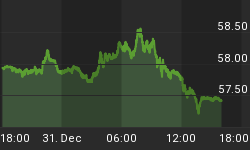To build a model, the assembler invariably ends up sniffing glue... in building the Banking model, more than a few pieces already in place have been improperly attached due to harmful vapors.
"We're assuming a trend of increasing rates and believe that this trend is likely to be generally beneficial, so long as the rise in rates is gradual and follows a relatively predictable pattern," said Mark Bachmann, Standard & Poor's managing director and head of Global Financial Services ratings.
Forgive my ignorance, but precisely when have rising interest rates been beneficial to anyone engaged in borrowing at negative real rates; unless, of course they are engaged in some aspect of the Financial Economy...
The "Real Economy", the one that actually produces goods and services certainly does not prosper under a rising cost of money; it misinterprets the interventionist signals of artificially low rates and misallocates capital.
Conversely, the first abusers in line for access to historically low Federal Funds have enjoyed a mountainous spread laid upon their table in which to feast. Over consumption of borrowed money has led to unparalleled "Bubbles" in every corner of the "Financial Economy."
Credit bubbles further expanding into asset bubbles in order to replace the missing "Cash Flow" from savings... this is Alan Greenspan's legacy. Credit expansion exceeded available savings under Chairman Greenspan's auspices.
And when the risks became untenable for the Federal Reserve to go it alone, Alan and Company began shifting the risk by raiding our Capital Stock, increasing the savings burden to the Fed's substitute... equity extraction from the housing bubble.
Capital Investment has all but dried up, the investment in out very futures is non-existent and the chasm between credit expansion and net national savings is well north of $2.5 trillion. Speculation in "wealth" has replaced prior income producing real economic activity.
We are currently approaching our fourth, concurrent "second half recovery".
Gains to gains to Employment, Real Wage Income and Industrial Production are as fictitious as the "Productivity Miracle" bantered about by Sir Alan. The din of "full-scale economic recovery" laced with strong employment growth, is beginning to wane.
Increasingly, the facts disavow eCONomist's optimistic forecasts.
It is becoming increasingly clear to this observer the fiscal and monetary stimulus thrust upon us in the first half of 2004 is having a negligible effect. This must cause great concern in the Bond Market as the epic degree of bull horning to placate the Bond herd has backfired once this year and appears to be setting up to yet once again.
The last accident occurred on merely a fractional unwinding in the carry trade. Rates spiked 100 basis points in short order.
Imagine the Real Rate Risk when things don't quite go according to plan. We will likely see days whereby Market Rates are jumping 25, 50 and perhaps even 100 basis points. The ill effects upon consumers will be most devastating.
It is best to prepare now as Chairman Greenspan has backed himself into a corner and the ground that once surrounded him is giving way.
















